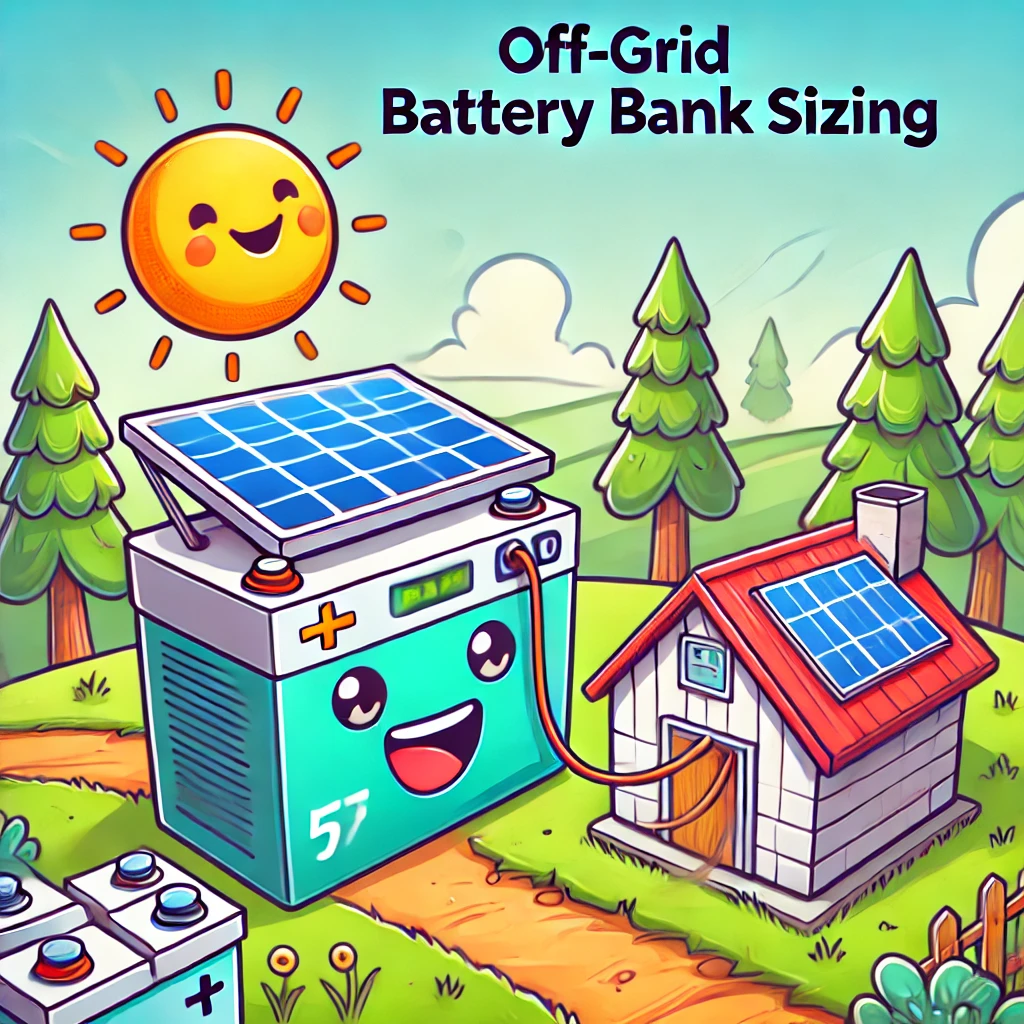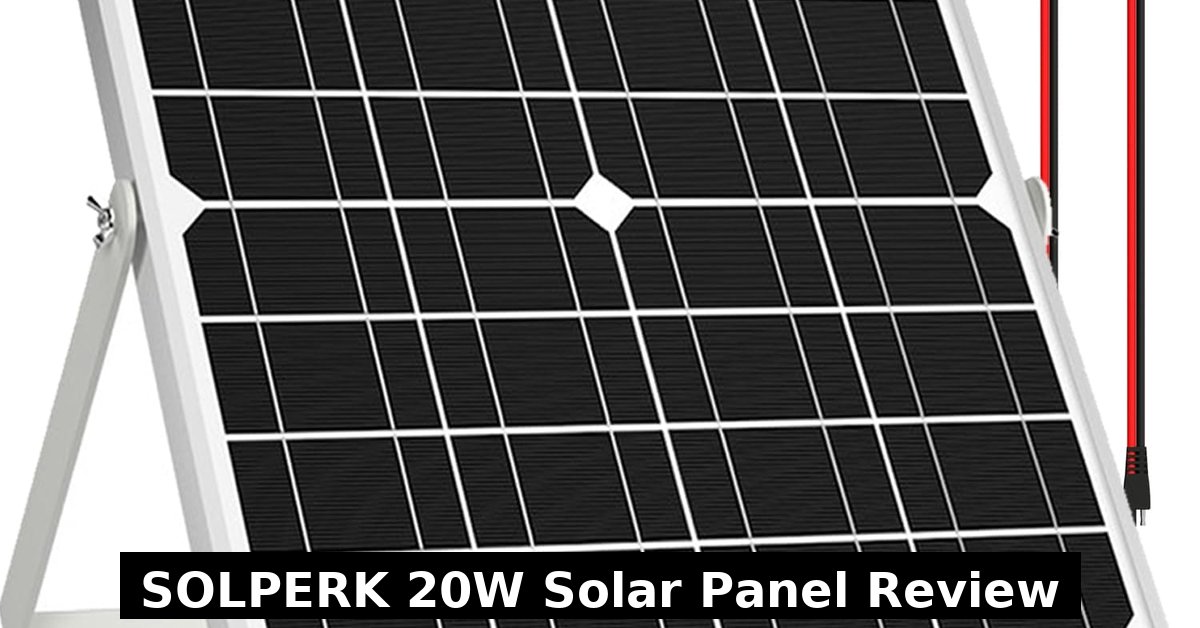Standing in front of countless solar panel options, wondering how many you actually need to keep your fans spinning—you’re not alone. This question puzzles thousands of homeowners exploring solar energy every single day. The truth? Most people overestimate their needs and end up spending more than necessary. This comprehensive guide cuts through the confusion, delivering precise answers based on real-world testing and practical experience.
The Short Answer That Surprises Most People
Here’s what catches everyone off guard: the majority of fans require just ONE solar panel. That’s right—a single, properly sized panel handles most residential cooling needs beautifully. The panic about needing multiple panels stems from outdated information and misconceptions about solar efficiency.
However, “one panel” doesn’t tell the complete story. The devil lives in the details—fan wattage, daily runtime, climate conditions, and whether you’re storing energy or going direct-feed all dramatically influence your actual panel requirements. Let’s unpack these variables so you can pinpoint your exact needs.
Understanding Your Fan’s Power Appetite
Before calculating panel requirements, you must know your fan’s energy consumption. This single number determines everything that follows.
Typical Fan Wattage Ranges
Different fan categories consume vastly different amounts of power:
Ultra-Efficient USB and Portable Fans: These compact coolers draw 5-15 watts, making them incredibly solar-friendly. A 5-watt USB fan running 10 hours daily needs merely 50 watt-hours—achievable with a tiny 20-30 watt panel.
Personal Desk and Table Fans: Mid-sized desktop units typically consume 15-35 watts. These represent the sweet spot for beginner solar projects, requiring minimal investment while delivering tangible cooling benefits.
Standard Ceiling Fans: The household workhorses draw 40-75 watts on medium speed settings. Modern energy-efficient models lean toward the lower end, while older units push toward 75 watts or higher. High-speed settings can spike to 90 watts temporarily.
Standing Pedestal and Tower Fans: These powerful circulators demand 50-100 watts depending on size and speed. Industrial-style 20-inch models easily hit 100+ watts when cranked to maximum.
Exhaust and Ventilation Fans: Bathroom and kitchen exhaust units typically need 20-50 watts, while whole-house attic fans can devour 200-400 watts during operation.
Industrial and Commercial Fans: Heavy-duty warehouse fans, agricultural cooling systems, and workshop ventilation require 150-500+ watts, pushing into serious solar territory requiring multiple panels or large-capacity single panels.
Locating Your Fan’s Specifications
Finding your specific fan’s wattage takes minutes but saves hundreds in overbuying panels. Check these locations:
The motor housing typically displays a nameplate listing voltage, amperage, and sometimes wattage directly. The user manual includes electrical specifications in the technical data section—downloadable from manufacturer websites if you’ve misplaced the physical copy. The original packaging often prints power consumption on specification labels.
No wattage listed? Calculate it yourself using this simple formula: Watts = Volts × Amps. A fan rated 120 volts pulling 0.5 amps consumes 60 watts (120 × 0.5 = 60).
Pro tip: Measure actual consumption using an electricity monitor plug—these $15-25 devices reveal real-world usage, often lower than nameplate ratings since manufacturers list maximum possible consumption.
The Critical Daily Runtime Factor
Panel requirements explode not from fan wattage alone but from daily operating hours. A 50-watt fan running 4 hours needs half the solar capacity of the same fan running 8 hours.
Calculating Daily Energy Consumption
This formula governs everything: Daily Watt-Hours = Fan Wattage × Hours of Operation
Real-world examples illustrate how runtime transforms requirements:
Scenario 1 – Minimal Cooling: A 60-watt ceiling fan operating 4 hours during afternoon heat consumes 240 watt-hours daily (60W × 4h = 240Wh).
Scenario 2 – Standard Comfort: The same 60-watt fan running 8 hours through afternoon and evening burns 480 watt-hours (60W × 8h = 480Wh).
Scenario 3 – Extended Cooling: Pushing that fan to 12 hours for overnight comfort demands 720 watt-hours (60W × 12h = 720Wh)—triple the minimal scenario despite identical fan wattage.
Scenario 4 – Continuous Operation: Running 24/7 for workshops, greenhouses, or pet areas requires 1,440 watt-hours daily (60W × 24h = 1,440Wh).
Notice the pattern? Runtime doubles or triples your panel needs even when fan wattage stays constant. This explains why identical fans might need completely different solar setups based solely on usage patterns.
Peak Sun Hours: The Geographic Game-Changer
Here’s where location transforms everything. Solar panels don’t produce rated wattage 24/7—they only hit peak output during “full sun” conditions. Your geographic location’s peak sun hours determine how much energy your panel actually harvests daily.
What Peak Sun Hours Really Mean
Peak sun hours represent equivalent hours of 1000 watts per square meter solar irradiance—the standard testing condition for panel ratings. This differs dramatically from total daylight hours.
Phoenix, Arizona enjoys 6-7 peak sun hours year-round, while Seattle, Washington averages just 3-4. Hawaii ranges 5-6 hours, Texas sits at 4.5-6, and cloudy northeastern states often see 3-4.5 hours. Coastal California varies wildly—southern regions hit 5-6 while northern areas drop to 4-5.
These variations aren’t trivial—they directly multiply your required panel capacity.
The Peak Sun Hour Calculation
To determine minimum panel wattage: Daily Watt-Hours ÷ Peak Sun Hours = Minimum Panel Wattage
Let’s apply this to our 60-watt fan running 8 hours (480 watt-hours needed):
Sunny Climate (6 peak hours): 480Wh ÷ 6 = 80 watts minimum. An 80-100 watt panel suffices.
Average Climate (5 peak hours): 480Wh ÷ 5 = 96 watts minimum. A 100-120 watt panel works.
Cloudy Climate (4 peak hours): 480Wh ÷ 4 = 120 watts minimum. A 120-150 watt panel required.
Very Cloudy Climate (3 peak hours): 480Wh ÷ 3 = 160 watts minimum. A 160-180 watt panel necessary.
The same fan needing 480 watt-hours daily requires an 80-watt panel in Phoenix but a 160-watt panel in Seattle—exactly double the capacity for identical performance.
The Safety Margin That Prevents Disappointment
Calculating exact minimum wattage is just the starting point. Real-world conditions demand additional capacity accounting for numerous efficiency losses.
Why Oversizing Matters
Solar systems lose 15-25% of theoretical production through various factors:
Panel aging reduces output 0.5-1% annually—a five-year-old panel produces 2.5-5% less than when new. Dust and dirt accumulation blocks 5-15% of light between cleanings. Temperature effects reduce efficiency as panels heat beyond 77°F—expect 10-20% losses during summer. Wiring resistance bleeds 2-5% through cable runs. Charge controller efficiency costs another 5-10% during voltage regulation. Battery charging losses consume 10-15% converting solar to stored chemical energy.
Stack these losses and suddenly your “perfect” calculation becomes inadequate.
Recommended Safety Margins
Apply these multipliers to calculated minimums:
Direct Connection Systems (No Battery): Add 20-25% overhead. If calculations suggest 100 watts, purchase 120-125 watts.
Battery-Based Systems: Add 30-35% overhead accounting for charging losses. A 100-watt calculation needs 130-135 watts actual.
Year-Round Reliability: Add 40-50% for cloudy seasons, winter production drops, and aging. That 100-watt minimum becomes 140-150 watts for worry-free operation.
Budget-conscious buyers might start with 25% margins, accepting occasional shortfalls during cloudy stretches. Those demanding absolute reliability should embrace 40-50% buffers guaranteeing performance under all conditions.
Single Panel Recommendations by Fan Type
Let’s translate theory into concrete product recommendations for various fan categories.
Small Fans (5-25 Watts)
USB Desk Fans and Mini Portables
These energy sippers need surprisingly little solar capacity:
- 4-hour daily use: 20-30 watt panel
- 8-hour daily use: 40-60 watt panel
- 12-hour daily use: 60-80 watt panel
Recommended products: 50-watt panels provide excellent all-weather performance with safety margin. Look for flexible or portable panels matching the fan’s mobile nature.
Medium Fans (25-60 Watts)
Table Fans, Small Ceiling Fans, Box Fans
The most popular residential category:
- 4-hour daily use: 60-80 watt panel
- 8-hour daily use: 100-150 watt panel
- 12-hour daily use: 150-180 watt panel
Recommended products: 100-watt panels represent the sweet spot—affordable, widely available, and perfectly sized for standard cooling needs. Upgrade to 150 watts for cloudy climates or extended runtime.
Large Fans (60-100 Watts)
Large Ceiling Fans, Pedestal Fans, Industrial Circulators
These powerful units demand more substantial solar:
- 4-hour daily use: 100-120 watt panel
- 8-hour daily use: 150-200 watt panel
- 12-hour daily use: 200-250 watt panel
Recommended products: 150-200 watt panels handle most scenarios. Consider 200-250 watts for continuous operation or multiple-day battery reserves.
Extra-Large Fans (100-200 Watts)
Whole-House Fans, Commercial Ventilators, Large Workshop Fans
Serious cooling requiring serious solar:
- 4-hour daily use: 150-200 watt panel
- 8-hour daily use: 250-300 watt panel
- 12-hour daily use: 350-400 watt panel
Recommended products: Single 300-400 watt panels provide one-panel convenience, or wire two 150-200 watt panels together for flexibility and redundancy.
When You Need Multiple Panels
Despite most fans needing single panels, certain situations demand multiple-panel arrays.
Running Multiple Fans Simultaneously
Each additional fan multiplies your power requirement. Calculate total daily consumption across all fans, then size your array accordingly.
Example: Three 50-watt ceiling fans running 8 hours each consume 1,200 watt-hours combined (3 fans × 50W × 8 hours). With 5 peak sun hours and 30% safety margin, you need 312 watts minimum—best served by two 150-watt panels or one 320-watt panel.
Extended Battery Backup Requirements
Storing multiple days of energy for cloudy weather periods demands extra generating capacity. Your panel array must produce normal daily consumption PLUS extra power recharging depleted batteries.
Planning three-day autonomy effectively requires panels 30-50% larger than single-day calculations suggest, enabling faster battery recovery during limited sunny windows between storms.
Compensating for Severe Shading
Properties with unavoidable shading obstacles need additional panels compensating for production losses. Shade reducing output 40% means buying 70% more panel capacity maintaining adequate daily harvest.
Future Expansion Plans
Starting with excess capacity allows adding fans later without upgrading panels. Buying 200 watts initially to run one 75-watt fan seems wasteful until you add a second fan next summer—then you’re perfectly sized without additional investment.
The Battery Storage Consideration
Panel quantity recommendations shift dramatically depending on whether you’re storing energy or directly powering fans.
Direct Connection Systems
Running fans only during sunny hours allows smaller panels—you need just enough wattage matching the fan’s real-time consumption plus 20% margin.
A 60-watt fan needs merely a 75-watt panel for direct daytime operation. Simple, cheap, but limited to sunny afternoon cooling.
Battery-Based Systems
Storing energy for evening and nighttime operation requires larger panels generating surplus daytime power filling batteries. This enables 24/7 operation from solar-only sources.
That same 60-watt fan running 8 hours (480Wh) now needs 100-150 watts capturing enough energy during 5-6 peak hours to both power immediate operation AND bank energy for later use.
Battery systems cost more upfront but deliver infinitely more flexibility and value.
Real-World System Examples
Concrete examples clarify abstract calculations better than formulas alone.
Budget System: Bedroom Cooling
Setup: 50-watt DC ceiling fan, 8 hours daily operation, direct connection (no battery)
Requirements: 400 watt-hours daily (50W × 8h)
Solution: One 100-watt solar panel provides comfortable margin for afternoon and evening cooling. Total cost approximately $100-150 for panel only, $200-300 including mounting and wiring.
Performance: Operates beautifully during sunny weather from 11am through dusk. Production drops on cloudy days requiring reduced fan speed or shorter runtime.
Mid-Range System: Living Room Comfort
Setup: 65-watt ceiling fan, 10 hours daily, battery storage for evening use
Requirements: 650 watt-hours daily (65W × 10h)
Solution: One 150-watt panel plus 100Ah 12V battery provides reliable all-weather operation. Total investment $350-500 depending on battery type (lead-acid vs. lithium).
Performance: Runs consistently regardless of weather or time. Battery maintains 2-3 days reserve capacity surviving cloudy stretches without production loss.
Premium System: Multi-Room Cooling
Setup: Three 60-watt ceiling fans, 8 hours daily each, lithium battery storage
Requirements: 1,440 watt-hours daily (3 fans × 60W × 8h)
Solution: Two 200-watt panels (400W total) plus 200Ah 12V lithium battery creates robust whole-home system. Investment ranges $800-1,200 for quality components.
Performance: Powers three-room cooling effortlessly with excess capacity for cloudy days, future expansion, or running fans longer during heat waves. System lasts 15-20 years with minimal maintenance.
Off-Grid Workshop System
Setup: 150-watt industrial exhaust fan, 12 hours daily, maximum reliability required
Requirements: 1,800 watt-hours daily (150W × 12h)
Solution: Three 150-watt panels (450W total) plus 400Ah battery bank ensures continuous operation through winter and multi-day storms. Investment approximately $1,000-1,500.
Performance: Industrial-grade reliability matching grid-connected systems. Handles extended cloudy periods without performance degradation. Oversized capacity accommodates adding lighting or tools later.
Portable vs. Fixed Panel Considerations
Your panel mounting style influences quantity recommendations subtly but importantly.
Fixed Roof-Mounted Panels
Permanent installations optimize angle and orientation for maximum yearly production. These achieve highest efficiency, allowing smaller total capacity. One well-positioned 150-watt fixed panel often outperforms two poorly angled 100-watt portables.
Fixed mounting suits dedicated solar fan systems where panels stay stationary powering the same fans indefinitely.
Portable Ground-Mounted Panels
Movable panels enable repositioning tracking the sun, compensating for smaller capacity through optimized positioning. However, few users actually move panels regularly—most set them once then leave them.
Portable mounting suits temporary installations, seasonal use (moving panels to winter storage), or renters unable to modify property permanently. Expect slightly larger capacity requirements compensating for non-optimal positioning.
Seasonal Variation Reality Check
Winter transforms solar production dramatically, requiring honest assessment of year-round needs versus summer-only use.
Summer-Only Operation
Using fans strictly June through September allows sizing panels for summer’s abundant sunshine. Smaller panels suffice since you’re not compensating for winter’s reduced production.
This approach suits seasonal properties, workshops used only in warm months, or supplemental cooling alongside air conditioning.
Year-Round Performance
Needing consistent winter operation forces sizing panels for shortest, cloudiest days. December’s minimal production governs your capacity—overbuilt for summer but adequate year-round.
This substantial oversizing costs more but guarantees reliability through all conditions. Most serious solar adopters choose this path despite higher initial investment.
Cost-Benefit Analysis: Single Large vs. Multiple Small Panels
When calculations suggest 250+ watts, should you buy one large panel or multiple smaller ones? Both approaches have merits.
Single Large Panel Benefits
Simplicity: One panel means one connection point, simpler wiring, easier mounting, and reduced installation time.
Efficiency: Fewer connections reduce resistance losses. Single panels typically cost less per watt than multiple smaller units.
Aesthetics: Cleaner appearance with unified mounting structure rather than multiple panels positioned separately.
Multiple Small Panel Benefits
Flexibility: Spreading panels across multiple roof sections or orientations captures sun longer daily. East and west-facing panels extend production hours versus single south-facing arrays.
Redundancy: One panel failing doesn’t stop the entire system—remaining panels continue generating power.
Budget Spreading: Purchase panels incrementally rather than dropping $300-500 at once. Start with one 100-watt panel, add a second later when budget allows.
Portability: Smaller panels weigh less and store easier, valuable for mobile or temporary installations.
Most residential applications favor single larger panels for simplicity and cost efficiency. Multi-panel arrays make sense for complex installations, shaded properties, or phased budget approaches.
The Verdict: Precision Panel Selection
Circling back to our original question with newfound clarity: How many solar panels do you need to run a fan?
For 80% of residential fans, the answer is ONE properly sized panel between 100-200 watts paired with appropriate battery storage.
Small efficiency fans under 25 watts need just 40-80 watt panels. Standard ceiling and table fans (40-75 watts) require 100-180 watt panels depending on daily runtime. Large floor fans and powerful circulators (75-150 watts) demand 150-300 watt capacity.
Multiple panels become necessary only when running several fans simultaneously, demanding multi-day backup reserves, compensating for severe shading, or powering industrial-scale ventilation.
The path forward requires three simple steps: Calculate your fan’s daily watt-hour consumption accurately. Determine your location’s peak sun hours honestly. Add 30-40% safety margin for real-world conditions.
This systematic approach eliminates guesswork, prevents costly oversizing, and ensures your solar investment delivers reliable cooling exactly matched to your needs—no more, no less. The sun’s free energy awaits; now you know precisely how to capture it.



